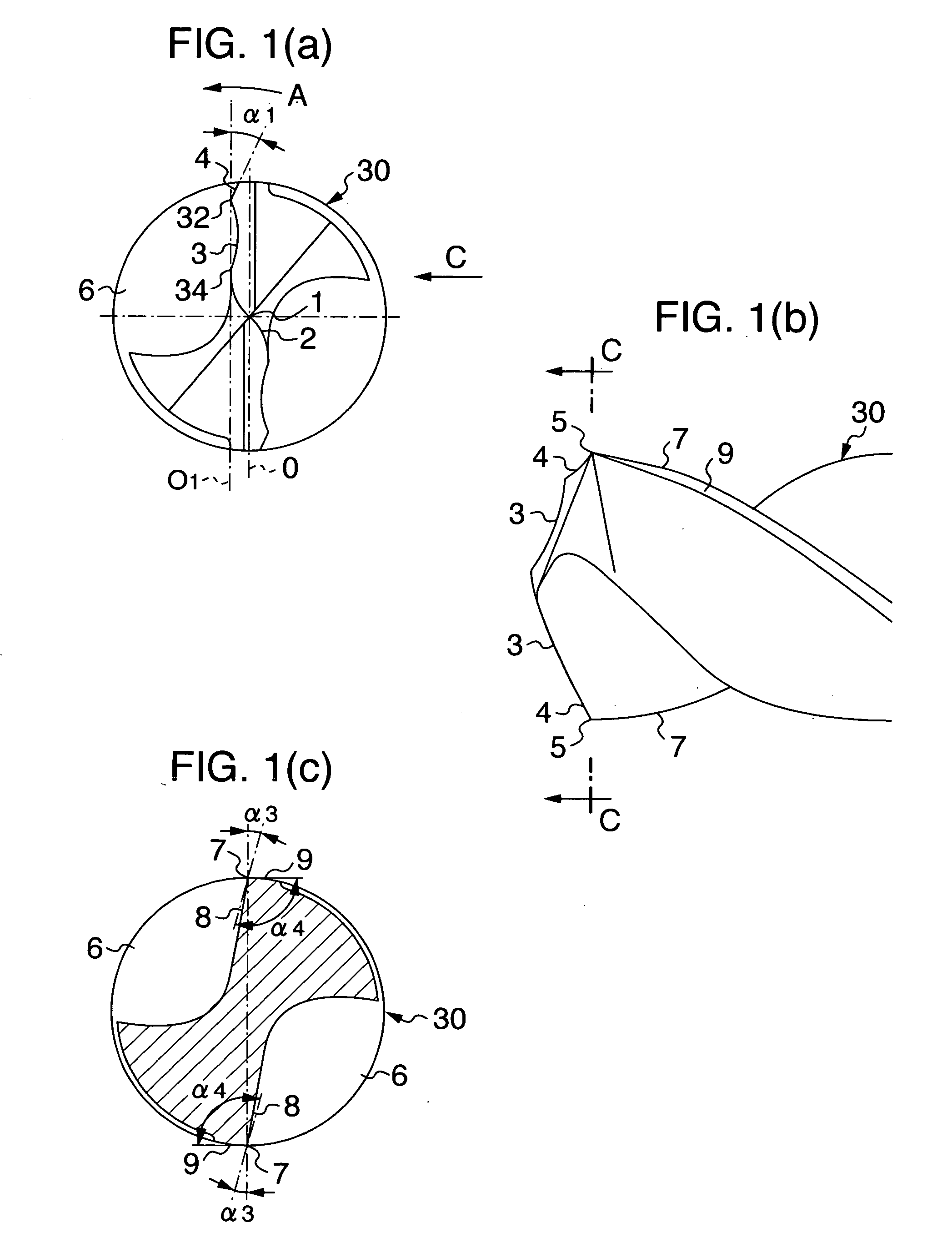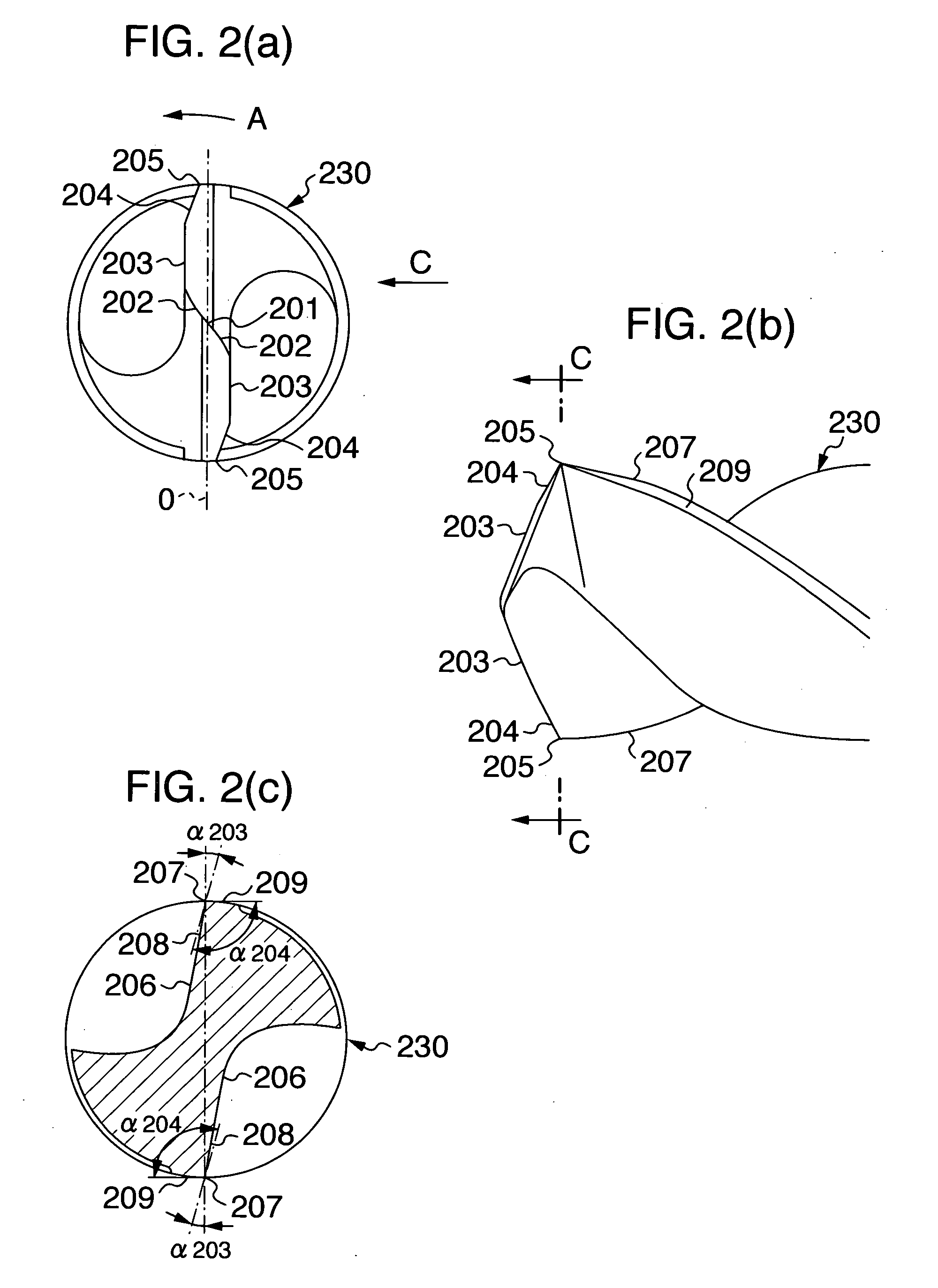Twist drill
- Summary
- Abstract
- Description
- Claims
- Application Information
AI Technical Summary
Benefits of technology
Problems solved by technology
Method used
Image
Examples
example 1
[0028] As the drill of the invention having the main cutting edges 3 of the centrally-concaved shape, a twist drill of cemented carbide configured as shown in FIG. 1 was manufactured. This twist drill has an outer diameter of 6 mm, a total length of 72 mm, a flute length of 28 mm, a point angle of 140°, and a margin width of 0.4 mm. A radius of curvature of the concave-shaped main cutting edges is 30% of the drill diameter (1.8 mm in radius), with their connection portions with the corner cutting edges slightly rounded convex. A radial length of the corner cutting edges is 7% of the drill diameter (0.42 mm in length) and an angle α1, which the corner cutting edges make with respect to a straight line (O1) parallel to a plane passing through the axis, is set to 10°.
[0029] For comparison, a twist drill of cemented carbide as shown in FIG. 3 was manufactured which had an outer diameter of linear main cutting edges 103 of 6 mm, a total length of 72 mm, a flute length of 28 mm, a point ...
example 2
[0032]FIG. 5 shows the result of a drilling test conducted as a wet cutting performance test, similarly to the example 1, with use of the drill of the invention, the conventional drill having the linear main cutting edges 103 shown in FIG. 3 and the conventional drill having the receding corner cutting edges 204 shown in FIG. 2. In these wet cutting performance tests, a work piece S50C (200HB) was drilled at a cutting speed of 80 m / min and a feed speed of 640 mm / min to a hole depth of 17 mm with use of a water-soluble cutting fluid, and the shapes of chips produced and the number of holes drilled up to the ends of service life of the drills were investigated. An upper part of the figure shows the shapes of chips and a lower part shows the number of holes drilled until the ends of service life.
[0033] As for the conventional twist drill with the linear cutting edges, the chips formed were somewhat elongated and the number of holes drilled was small because of the progression of corne...
PUM
| Property | Measurement | Unit |
|---|---|---|
| Fraction | aaaaa | aaaaa |
| Fraction | aaaaa | aaaaa |
| Thickness | aaaaa | aaaaa |
Abstract
Description
Claims
Application Information
 Login to View More
Login to View More - R&D
- Intellectual Property
- Life Sciences
- Materials
- Tech Scout
- Unparalleled Data Quality
- Higher Quality Content
- 60% Fewer Hallucinations
Browse by: Latest US Patents, China's latest patents, Technical Efficacy Thesaurus, Application Domain, Technology Topic, Popular Technical Reports.
© 2025 PatSnap. All rights reserved.Legal|Privacy policy|Modern Slavery Act Transparency Statement|Sitemap|About US| Contact US: help@patsnap.com



